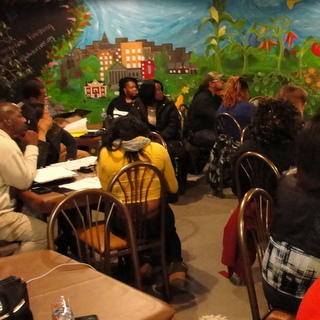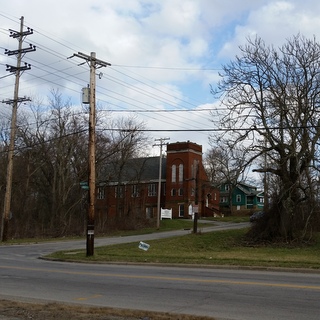A new body of evidence suggests that adding greenery in vacant or gray settings reduces criminal activity nearby.
There are plenty of reasons to like green spaces in cities: they’re pretty, they catch stormwater runoff, they improve health. And now a new body of evidence is coming into focus on how urban nature affects crime. It appears that the way we take care of our trees, shrubs, and lawns makes a difference for the safety of the surrounding area.
The field of research is still pretty young, but recent studies have found significant associations between green space maintenance and certain types of crime in Philadelphia, Baltimore, and Youngstown, Ohio. The exact mechanism is not yet known, but one theory harkens back to Jane Jacobs’ notion of “eyes on the street”: well-kept lawns and community plots encourage more people to spend time outside in those spaces, leading to a greater degree of informal surveillance of the area and deterring crime.
Taken together, this research gives cities reasons to reassess policies about cleaning and greening vacant lots, developing parks, or catching stormwater in green installations. Beyond the ecological and aesthetic benefits, these investments create a safer environment for the people who live nearby.
Reclaimed green space vs. crime rates in Youngstown
The city of Youngstown, Ohio, has been struggling with high unemployment and economic stagnation since deindustrialization gutted the jobs there. With 31 percent of the city’s land area vacant, Youngstown launched a program to turn those empty spaces into an asset. From 2010 to 2014, they hired a contractor to mow the plots and put fences around them. After a year they added a program that gave local communities the funding to improve vacant lots as they chose, including gardens, fruit trees, and monuments.
Weeds grow around empty buildings still standing from Youngstown’s industrial past, November 22, 2009. (Reuters / Brian Snyder)
This program created a natural experiment: The city had variable treatments (contracted improvement, locally driven improvement) and a control (unimproved vacant lots). When a team of researchers examined crime data around these sites for a study published in 2015, they found that the treatment lots had lower rates of property crime, like theft and burglary, and violent crime. The effects weren’t identical, though. The contracted lots saw a greater decline in property crime, while the community lots had a more pronounced reduction in violent crime.
The findings suggest different types of green space have different effects on crime. The contracted lots may have better visibility, which deters theft by eliminating vegetation that can hide assailants or stashed loot, says Michelle Kondo, one of the authors of the study and a research social scientist with the U.S. Forest Service. The gardens designed by the community, meanwhile, might attract more care and attention from the local residents, thus creating an atmosphere that deters heat-of-the-moment violence.
The researchers also looked at crimes in areas surrounding the test sites, to make sure the park improvements weren’t simply displacing crime to nearby areas. The data indicated that rates of crime were indeed falling in the surrounding areas, and not just shifting location. It wasn’t all good news though: There was a significant increase in vehicle thefts at the greened sites compared to the sites that were left vacant. The authors theorize that the nicer-looking spaces might have invited more people to leave their cars around the greened areas than before, creating more potential targets. On the whole, the study suggests cities should prioritize the revitalization of vacant lots not just for aesthetic reasons or economic reasons, but to fight crime as well.
Green stormwater plots vs drug possession in Philadephia
In 2000, Philadelphia launched a program to convert roadside gray spaces into vegetated plots that soak up rainwater. Kondo and her colleagues examined 52 sites across the city, along with control sites that hadn’t received the upgrade yet, and tracked 14 types of crime in those places. They found a statistically significant reduction in narcotics possession around the green improvements—the rate was 18 to 27 percent lower there than at control sites, even as the citywide rate rose 65 percent.
Kondo speculates that the drop in possession might result from the visible change to the previously paved and anonymous spaces. When they have plantings or well-tended lawns, they tend to attract more positive attention and convey a stronger government presence.
Philadelphia’s “Green City, Clean Waters” program installed a variety of green infrastructure in city blocks to absorb stormwater runoff.
“It could be that having some sort of facility that is owned and operated and maintained by the city, that could have [Philadelphia Water Department] vans coming by you never know when, that could signal that you might not want to hang around there” for illicit activity, Kondo says. It’s possible that the landscapes chosen for the green interventions played a more significant role in the drug trade than in other types of crime.
Cities need green retention spaces first and foremost to prevent stormwater from overwhelming their sewers and spewing polluted sludge into the surrounding environment. They carry other benefits, too, like making spaces more enjoyable to spend time in. This research suggests they could be designed as a tool in urban drug policy—why just prevent runoff when you could deter the drug trade as well?
Well-kept lawns vs. crime in Baltimore
Crossing over to private property, new research suggests that well-maintained residential yards are associated with lower crime rates than poorly maintained lawns. Scientists conducted detailed lawn surveys of 1,000 houses across Baltimore City and County, then cross-referenced them with data on crimes reported within 150 meters of each property. The analysis, published in the journal Landscape and Urban Planning last fall, found 10 statistically significant landscape characteristics.
“The level of maintenance of the yard is almost like a neighborhood watch sign saying, ‘We have eyes on the street and we will say something.’”
The most powerful indicators of a decrease in crime were having a lawn, the presence of garden hoses or sprinklers, shrubs, tree cover, percentage of pervious area, and the presence of yard trees. The factors most strongly tied to more crime were the number of small street trees, litter, uncut lawn, and a dried out lawn.
It’s hard not to see the income-related implications of this: If you can afford to live in a leafy neighborhood and maintain a lawn with plentiful bushes and trees, chances are you’re in a safer place than if you live in a trash-strewn block with a dried up, unmowed yard and a bunch of weed trees left unattended along the roadside.
But there’s more to it than that, says author Morgan Grove, who’s also a researcher with the Forest Service. Criminals tend to look for spaces where they can operate without being seen, or where if they’re seen they won’t be reported.
“The level of maintenance of the yard is almost like a neighborhood watch sign saying, ‘We have eyes on the street and we will say something,’” Grove says. “There’s a physical fact, which is that people can see criminals, but also this symbolic meaning that reinforces the social order that people will act upon their own behalf and on behalf of others.”
Whereas the “broken windows” theory suggests criminals look for physical signs of neglect when scoping out targets, the Baltimore yard study supports the “cues to care” theory, that visible maintenance of shared spaces presents “a sign of social capital and cohesion that might deter criminals.”
The upshot: Urban greenery should play more of a role in cities’ plans to reduce crime. A good first step would be increasing public attention to landscaping in high-crime areas and assisting residents in taking care of their own lots. This brings more urgency to cities’ maintenance of vegetation on public land. A dead tree on the sidewalk isn’t just a dead tree anymore.
To read the whole story from City Lab, click here.
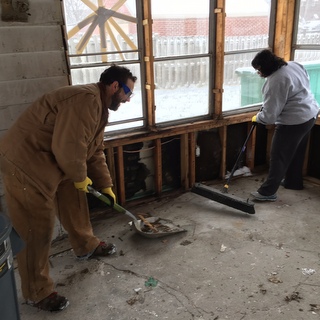 ,
, 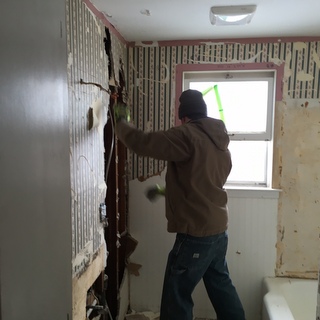 ,
, 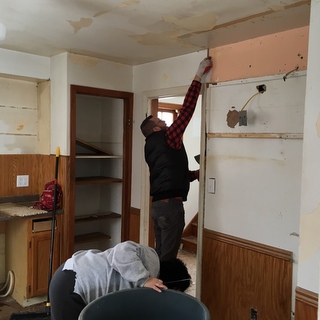 ,
, 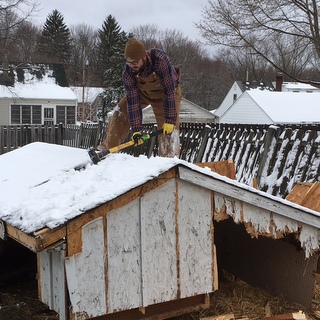 ,
, 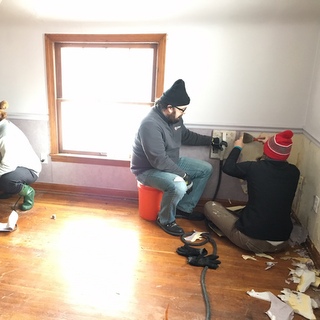 ,
, 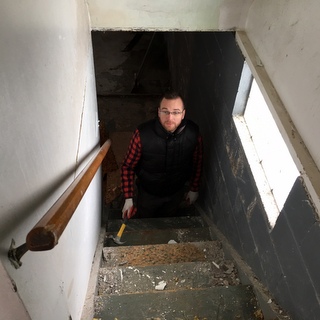
 ,
,  ,
,  ,
,  ,
,  ,
, 
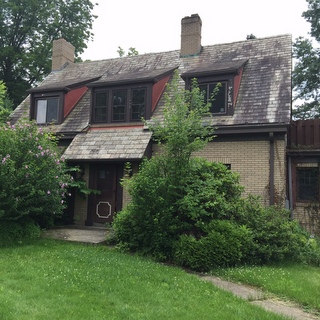


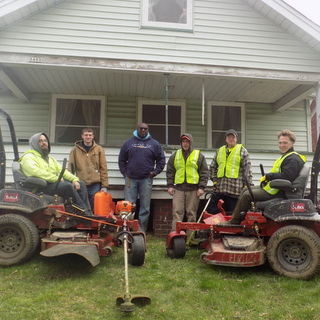 ,
, 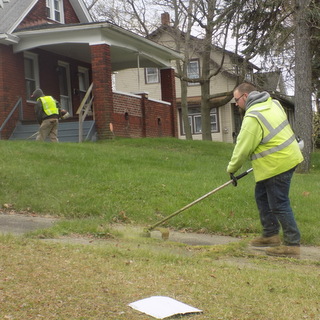 ,
, 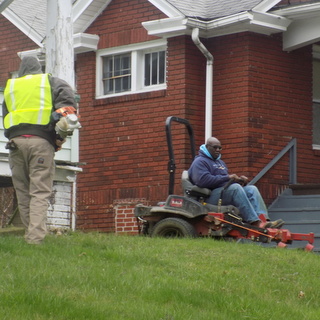
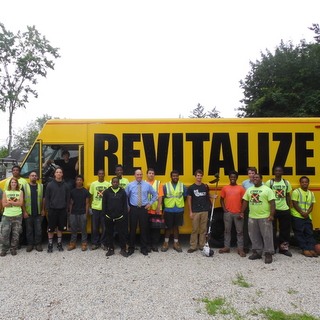
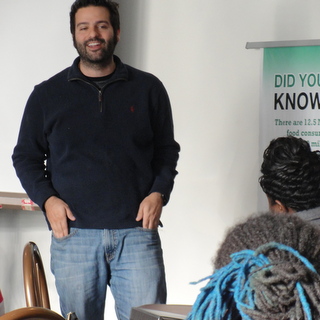 ,
, 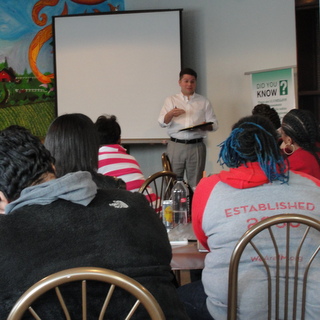 ,
, 